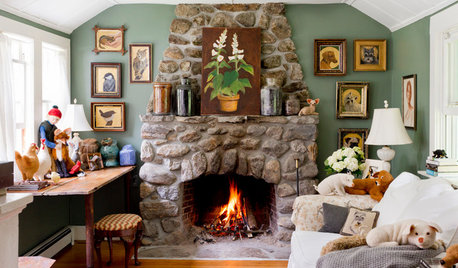Chimney repair mortar air gap problem
YourUnknownFriend
10 years ago
Related Stories

REMODELING GUIDESThe Hidden Problems in Old Houses
Before snatching up an old home, get to know what you’re in for by understanding the potential horrors that lurk below the surface
Full Story
MOST POPULAR5 Ways to Hide That Big Air Conditioner in Your Yard
Don’t sweat that boxy A/C unit. Here’s how to place it out of sight and out of mind
Full Story
DECORATING GUIDES10 Ways to Hide That Air Conditioner
Feeling boxed in designing around your mini-split air conditioner? Try one of these clever disguises and distractions
Full Story
HOUSEKEEPINGProtect Your House From Winter Water Damage
Avoid costly repairs by learning to spot potential problem areas before water damage is done
Full Story
LIFE6 Ways to Cool Off Without Air Conditioning
These methods can reduce temperatures in the home and save on energy bills
Full Story
HOUSEKEEPINGBefore You Roast Those Chestnuts, Make Sure You've Got a Clean Chimney
Here's how to ensure your chimney is safe for holiday gatherings by the fire
Full Story
HOUSEKEEPINGLower Your Heating Bills With Some Simple Weather Stripping
Plug the holes in your house this winter to make sure cold air stays where it belongs: outside
Full Story
LIFE10 Smart Ways to Deal With Summer Gear
Start fall with a clean slate by organizing, repairing and storing summertime essentials the right way
Full Story
GREAT HOME PROJECTSHow to Give Your Driveway and Front Walk More Curb Appeal
Prevent injuries and tire damage while making a great first impression by replacing or repairing front paths
Full Story
DECORATING GUIDESHow to Work With Awkward Windows
Use smart furniture placement and window coverings to balance that problem pane, and no one will be the wiser
Full Story









User
Related Professionals
Lebanon Home Remodeling · Ballenger Creek Kitchen & Bathroom Designers · El Sobrante Kitchen & Bathroom Designers · Grafton Kitchen & Bathroom Designers · Palmetto Estates Kitchen & Bathroom Designers · Bloomingdale Kitchen & Bathroom Remodelers · Broadlands Kitchen & Bathroom Remodelers · Green Bay Kitchen & Bathroom Remodelers · Patterson Kitchen & Bathroom Remodelers · Vienna Kitchen & Bathroom Remodelers · Vista Kitchen & Bathroom Remodelers · Dania Beach Architects & Building Designers · Fort Lewis Architects & Building Designers · Plainfield Architects & Building Designers · West Jordan Architects & Building Designers